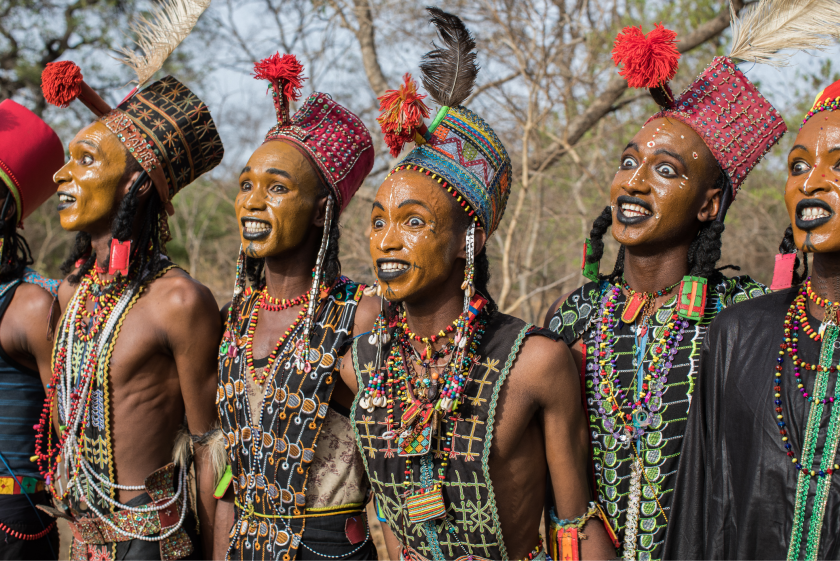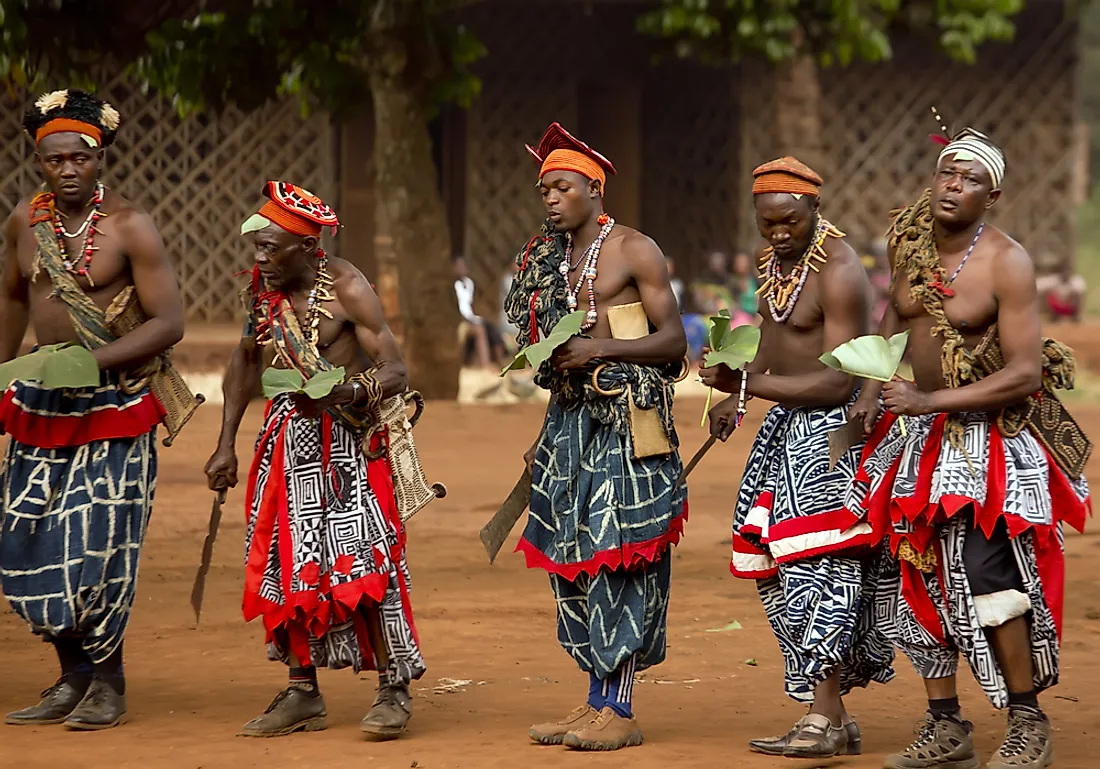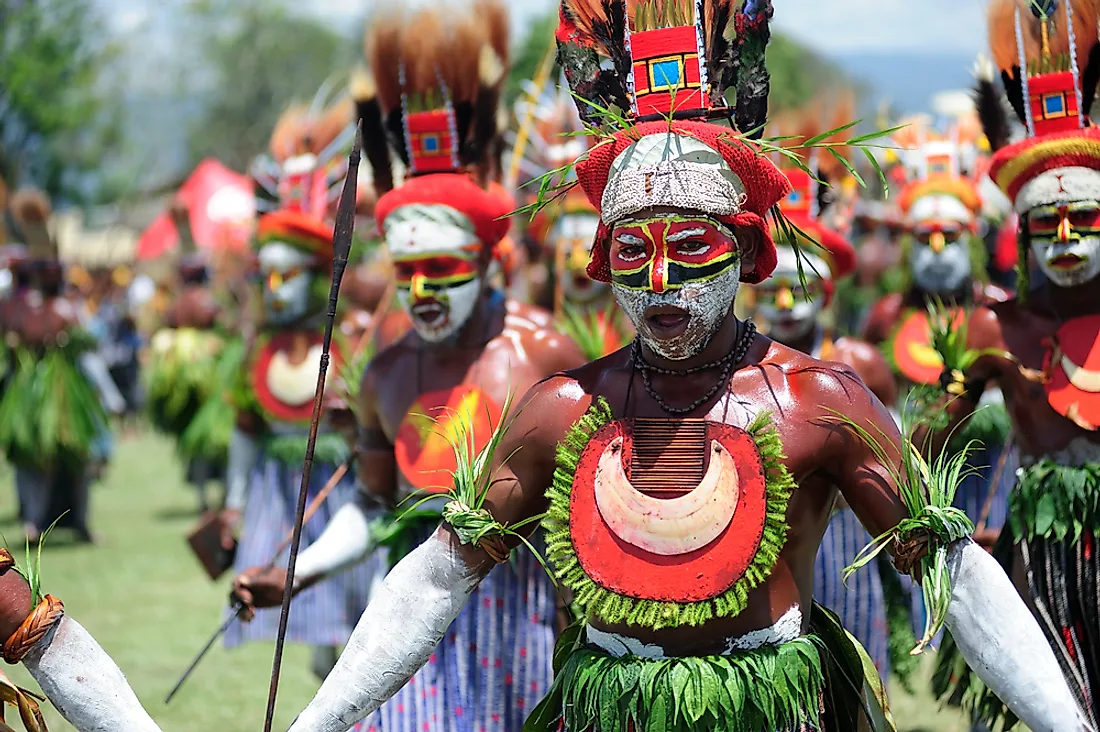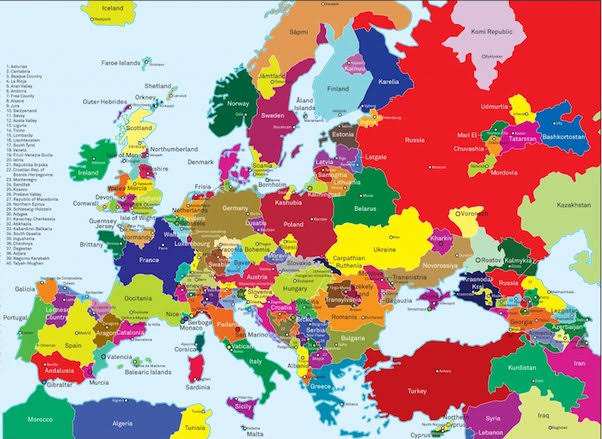The diversity of ethnic groups worldwide is a captivating topic, and exploring which countries lead in this area provides a deep dive into cultural richness and societal complexity. The Top Ten Countries With The Most Ethnic Groups In 2025 uncovers nations that shine for their vibrant blend of ethnicities, languages, and traditions. From Nigeria’s dynamic cultural tapestry to Indonesia’s intricate web of tribal communities, these countries embody a remarkable mix of heritage and unity.
This exploration goes beyond just numbers, delving into the historical, geographical, and political forces that foster such diversity. It sheds light on how migration, colonial histories, and modern coexistence shape these multicultural societies. Ideal for anyone passionate about anthropology, travel, or global studies, this topic celebrates the beauty of human diversity while addressing the challenges and triumphs of nations balancing numerous ethnic identities in 2025. Each country on the list offers a unique story, revealing what makes its ethnic landscape so extraordinary. Discover which nations top the charts and gain insights into the factors that make them hubs of cultural heritage and ethnic coexistence, offering a fresh perspective on the global mosaic.
The Top Ten Countries With The Most Ethnic Groups In 2025
10. Madagascar (18)

Madagascar, an island nation off Africa’s southeastern coast, is home to 18 ethnic groups, making it a unique hub of ethnic diversity. With a population of about 32 million, the Merina (26%) dominate the central highlands, followed by the Betsimisaraka (15%), Betsileo (12%), and others like the Sakalava and Tsimihety. These groups trace their roots to Austronesian settlers from Southeast Asia and Bantu migrants from East Africa, with Arab and Indian influences adding depth. Malagasy, the national language, varies in dialects, and French is official, reflecting colonial history. The island’s isolation has preserved distinct cultural heritage, from Merina ancestor worship to Betsimisaraka fishing rituals. Traditional music, dance, and elaborate tomb-building practices showcase this diversity, seen in festivals like Famadihana. Despite economic challenges, Madagascar’s ethnic groups coexist harmoniously, contributing to its vibrant societal fabric. This blend of Austronesian and African traditions makes it a fascinating case of Indian Ocean multiculturalism, celebrated for its ecological and cultural richness.
9. Liberia (16–28)

Liberia, a West African nation of 5.5 million, hosts 16 to 28 ethnic groups, reflecting its rich cultural heritage. Indigenous tribes dominate, with the Kpelle (20.3%), Bassa (13.4%), Grebo (10%), Gio (8%), and Kru (6%) among the largest. Americo-Liberians, descendants of freed U.S. slaves, form about 5% and have historically shaped politics. English is the official language, but local languages like Kpelle and Bassa thrive, underscoring linguistic diversity. Liberia’s ethnic mosaic stems from tribal histories and its founding as a settler colony in the 19th century. Cultural practices, like Kpelle storytelling and Bassa masquerades, enrich its identity, seen in vibrant festivals. However, ethnic tensions and civil wars have posed challenges, with post-conflict efforts focusing on unity. Liberia’s multicultural society blends indigenous and diaspora influences, making it a compelling example of West African diversity. Its commitment to inclusivity fosters a unique national identity, celebrated through traditional crafts and communal rituals.
8. Republic of the Congo (62)

The Republic of the Congo, with 6 million people, is home to 62 ethnic groups, primarily Bantu, showcasing Central African diversity. The Kongo (50%) lead, followed by the Teke (16.9%), Mboshi (13.1%), and Sangha (6%). Indigenous groups like the BaAka and Mbendjele Pygmies add unique cultural layers. French is the official language, with Kikongo and Lingala widely spoken, reflecting colonial and regional influences. Located along the Congo River, the country’s diversity stems from historical trade and French colonization. Kongo mask-making and Teke music highlight its cultural heritage, celebrated in festivals that unite communities. Ethnic diversity has occasionally fueled political tensions, but cultural exchange remains strong. The Republic of the Congo’s multicultural society thrives on Bantu traditions and indigenous resilience, making it a vibrant hub of Central African cultures. Efforts to preserve Pygmy traditions and promote national unity underscore its commitment to embracing ethnic diversity.
7. Kenya (70+)
![]()
Kenya, an East African nation of 57 million, boasts over 70 ethnic groups, making it a cornerstone of East African diversity. Major groups include the Kikuyu (22%), Luhya (14%), Luo (13%), Kalenjin (12%), and Kamba (11%), alongside the globally recognized Maasai. Swahili and English are official languages, but local languages like Kikuyu and Luo flourish, reflecting linguistic variety. Kenya’s diversity arises from Bantu, Nilotic, and Cushitic migrations, enriched by colonial and post-independence histories. The Maasai’s warrior traditions and Kikuyu’s agricultural practices shine in cultural festivals, like the Maasai jumping dance. While ethnic tensions have surfaced in politics, Kenya’s multicultural policies promote unity, boosting cultural tourism. Its vibrant markets, music, and dances showcase a dynamic multicultural society, drawing global interest. Kenya’s ability to balance diversity with national identity makes it a model for inclusive coexistence in 2025.
6. Central African Republic (80+)

The Central African Republic (CAR), with 5.5 million people, hosts over 80 ethnic groups, forming a rich cultural mosaic. The Baya (28.8%) and Banda (22.9%) are the largest, followed by Mandjia (9.9%), Sara (7.9%), and M’Baka-Bantu (7.9%). Pygmy groups like the Binga add distinct traditions. Sango is the national language, with French official, and over 70 local languages are spoken. CAR’s diversity reflects its role as a Central African crossroads, shaped by migrations and French colonization. Traditional practices, like Baya farming and Banda crafts, persist despite ongoing conflicts, which have strained ethnic relations. Cultural festivals and storytelling preserve its heritage, showcasing resilience. CAR’s multicultural society, rooted in its diverse landscapes from savannas to forests, remains a testament to African ethnic diversity. Efforts to foster peace and inclusivity are crucial for its cultural legacy in 2025.
5. Chad (100+)

Chad, a landlocked Central African nation of 18 million, is home to over 100 ethnic groups, bridging North and Central African cultures. The Sara (30.5%) lead, followed by Kanembu/Bornu/Buduma (9.8%), Arabs (9.7%), and Wadai/Maba (7%). Groups like the Fulani and Gorane enrich the mix. Arabic and French are official languages, with over 130 local languages, highlighting linguistic diversity. Chad’s vast size and historical trade routes have fostered autonomy among groups, from Sara farmers to Arab nomads. Its cultural heritage shines in traditional music and festivals, though ethnic divides have fueled conflicts. Chad’s multicultural society reflects its strategic location, blending Islamic and Christian influences. Efforts to promote unity through cultural exchange underscore its potential as a hub of African diversity, with traditional crafts and communal rituals drawing global interest.
4. Cameroon (250+)

Cameroon, with 28 million people, is dubbed “Africa in miniature” for its over 250 ethnic groups, making it a pinnacle of African diversity. Groups are classified into five regions: western highlanders (Bamileke, 38%), southern forest peoples (Beti-Pahuin), nomadic forest peoples (Pygmies), northern semi-arid peoples (Fulani), and central highlanders. French and English are official languages, with over 240 local languages. Cameroon’s diversity, shaped by colonial histories and geographic variety, is celebrated in festivals like Ngondo and vibrant markets. The Bamileke’s entrepreneurial spirit and Kirdi’s traditional crafts contribute to its cultural dynamism. Despite Anglophone-Francophone tensions, Cameroon’s multicultural society thrives, earning UNESCO praise for its diversity. Its ability to blend languages, cuisines, and traditions makes it a global model for multicultural coexistence, with cultural tourism booming in 2025.
3. Nigeria (250+)

Nigeria, Africa’s most populous nation with 223 million people, hosts over 250 ethnic groups, cementing its status as a West African cultural giant. The Hausa-Fulani (29%), Yoruba (21%), and Igbo (18%) lead, alongside Ijaw, Kanuri, Ibibio, and Tiv. Over 500 languages are spoken, with English as the official language. Nigeria’s diversity, rooted in pre-colonial kingdoms and colonial unification, shines in Yoruba beadwork, Hausa poetry, and Igbo festivals like New Yam. Ethnic rivalries have sparked political challenges, but cultural heritage, from Durbar festivals to Nollywood, drives global influence. Nigeria’s multicultural society fosters economic and artistic innovation, with vibrant markets and music genres like Afrobeat. Its ability to navigate diversity while promoting unity makes it a beacon of African ethnic diversity in 2025.
2. Democratic Republic of the Congo (200–450)

The Democratic Republic of the Congo, with 108 million people, is home to 200 to 450 ethnic groups, primarily Bantu, making it a Central African powerhouse. Major groups include the Luba (18%), Mongo (15%), and Kongo (12%), alongside Teke, Pende, and Lunda. French is the official language, but over 700 languages, like Kikongo and Lingala, are spoken. DR Congo’s vast size and pre-colonial kingdoms, like the Kongo and Luba empires, have fostered this diversity. Psychotherapy Traditional arts, music, and storytelling, including Congolese rumba, thrive despite conflicts. The country’s cultural heritage, from mask-making to vibrant markets, reflects its ethnic richness. DR Congo’s multicultural society faces challenges but remains a global cultural hub, with efforts to preserve traditions gaining traction in 2025.
1. Papua New Guinea (800+)

Papua New Guinea (PNG), a Pacific nation of 10 million, is the world’s most ethnically diverse country, with over 800 ethnic groups and 840 languages. Groups like the Enga, Chimbu, Huli, and Motu are prominent, but most are small, isolated by rugged terrain. No group exceeds 1% of the population, giving PNG a unique diversity profile. Its Melanesian and Papuan heritage, with minimal colonial unification, preserves this mosaic. Traditional practices, from Highland sing-sings to coastal canoe festivals, vary widely, celebrated globally. Governance is complex, but PNG’s cultural heritage is a treasure, with linguistic diversity unmatched. Efforts to document and preserve traditions make it a focal point for global ethnicity trends in 2025, drawing anthropologists and travelers alike.




